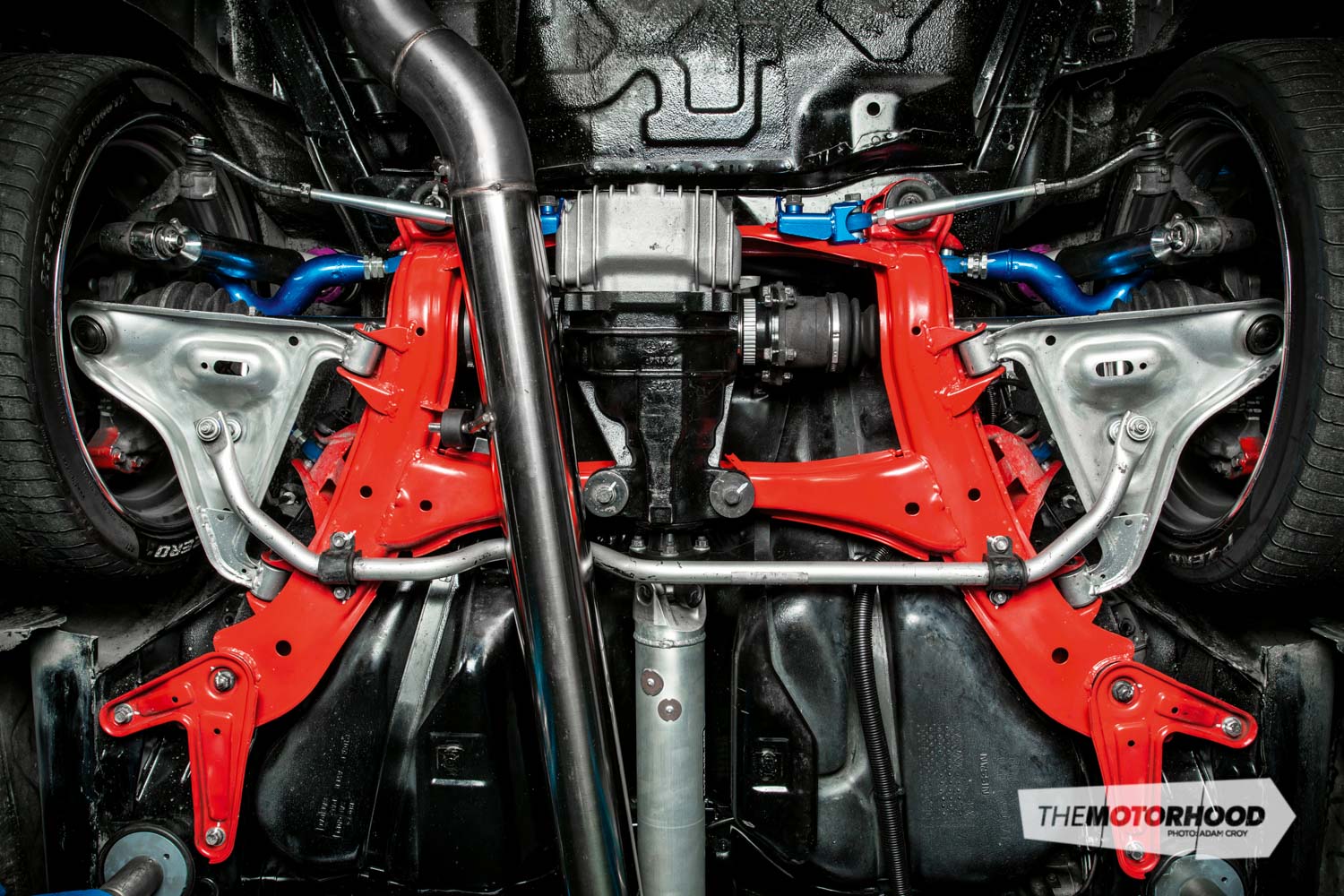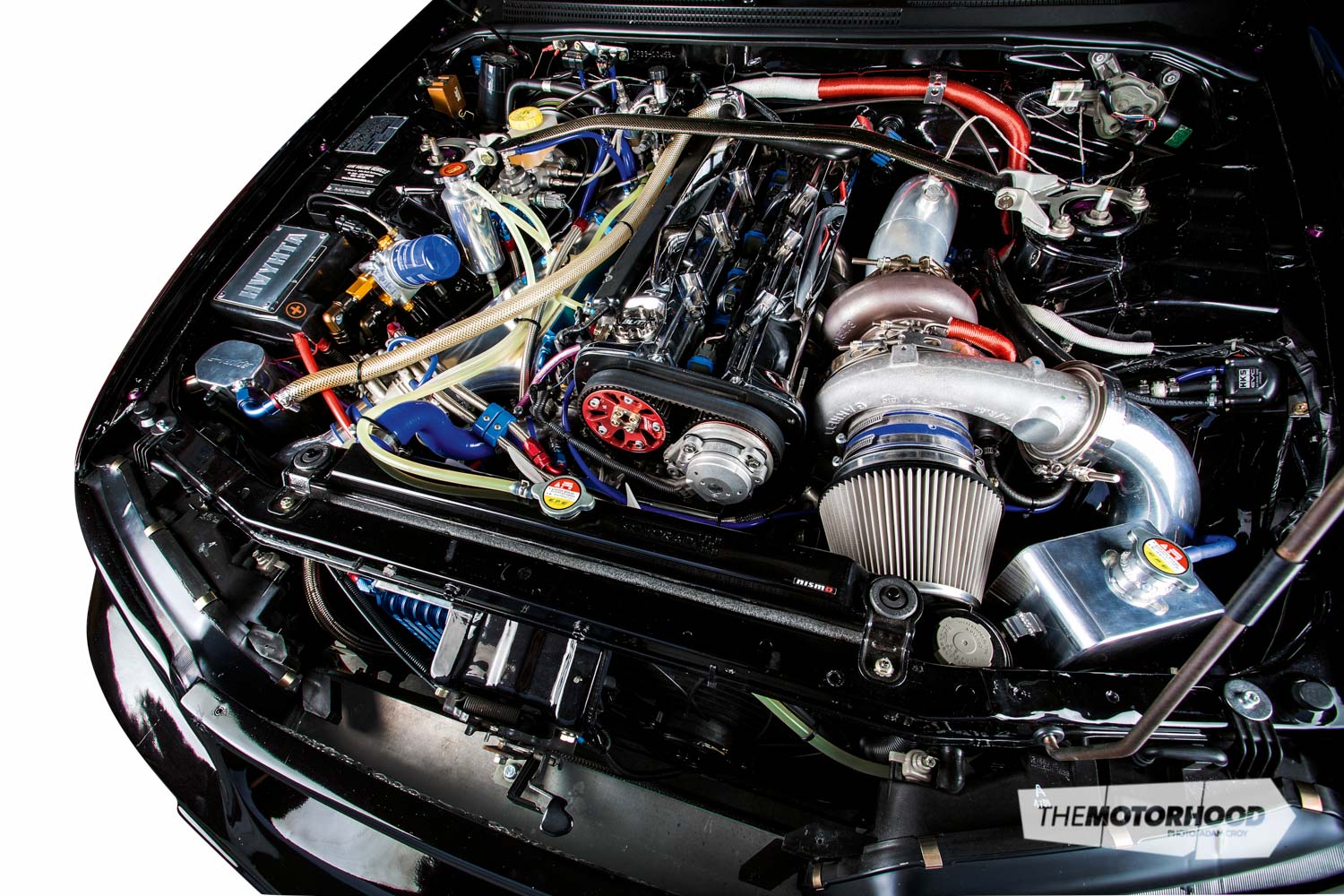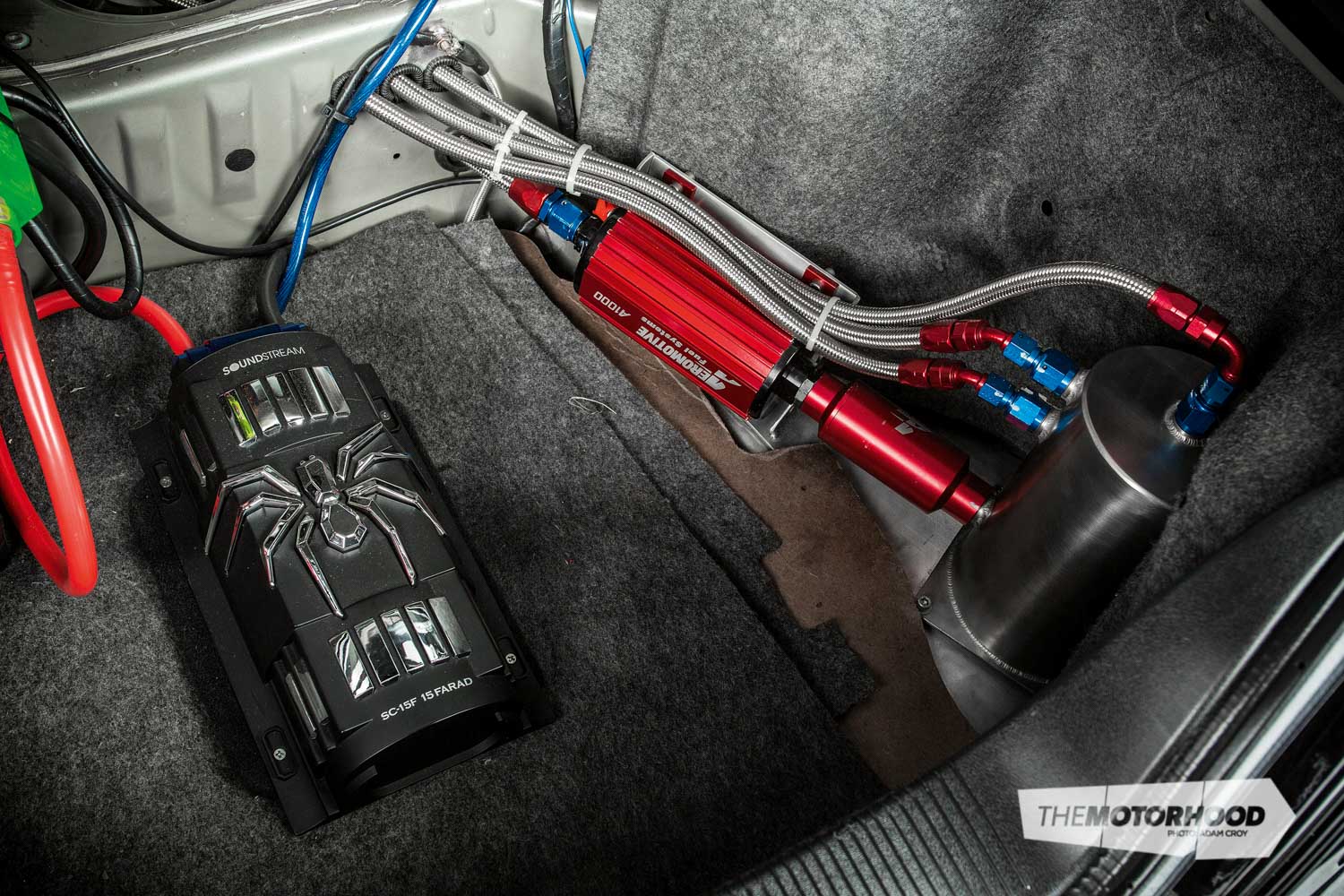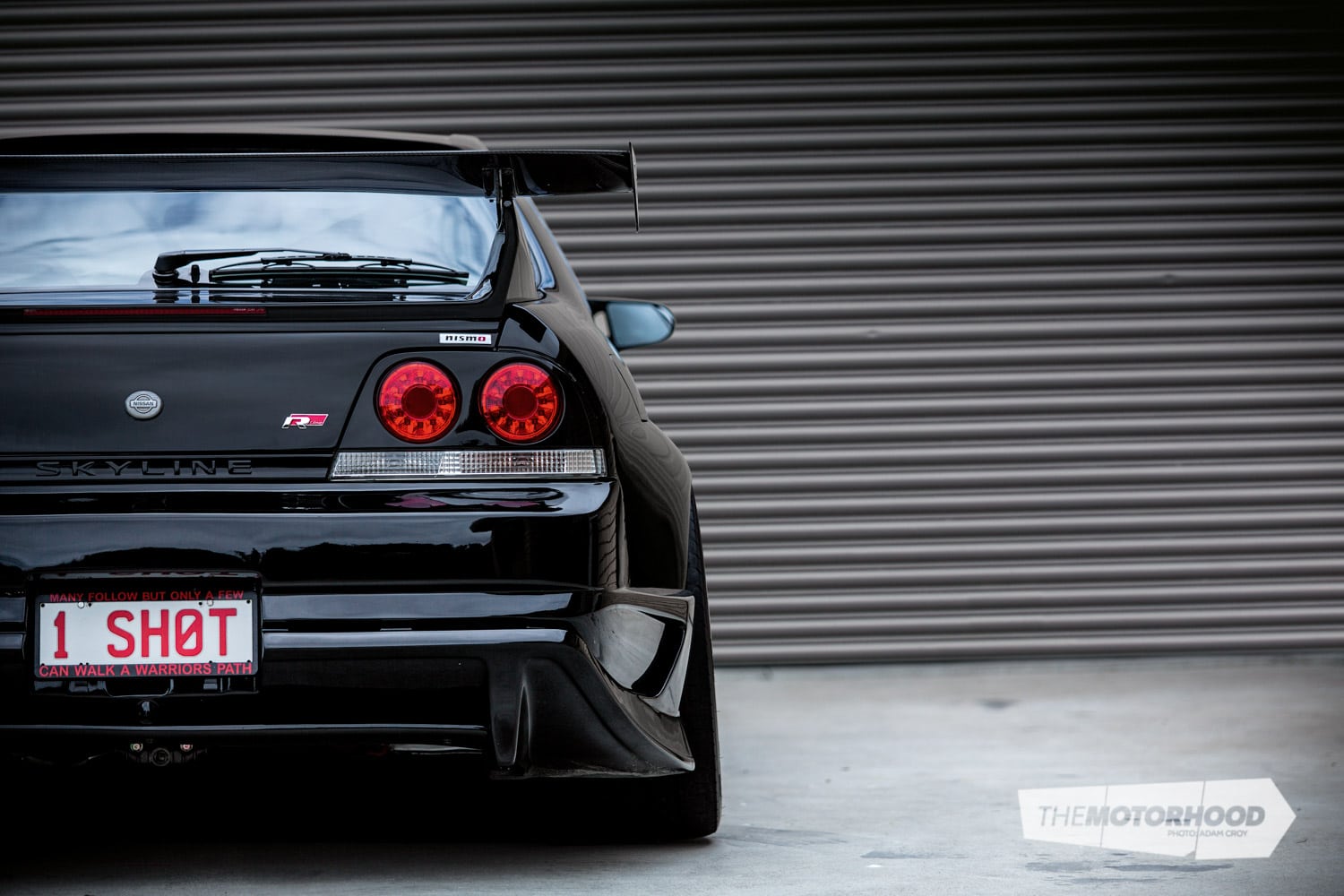data-animation-override>
“Frank Perez’s R33 was built for one thing — kicking arse”
Sibling rivalry is something anyone with a brother or sister will be able to relate to — that unwavering need we had as kids to best our siblings at any chance, no matter what the task, whether it was running to the letter box, or via the size of those sweet bombs into the pool. As you get older that rivalry doesn’t tend to die off, especially if you’re both involved with motorsport.

Frank Perez had forever been at his younger brother John for a drag race. And despite the fact John’s R32 GT-R (known as ‘IMGOD’) wears an NZ Performance Car 500kW club sticker, John knew lining up against Frank’s heavily-modified street bike would be foolhardy, and he flatly refused whenever the subject was brought up. Frank’s long been a two-wheel man, getting his start at an early age. “My first road bike was given to me at age 15 – a huge 1988 Katana. My very first ride, I damaged it and had to fix it myself. I pulled it down completely, and that is where the passion started. By the age of 17, I had had more than a few stacks, but had made it through in one piece. From then on, it was on to bikes over 1000cc, a bunch of race bikes, a few Harleys (which didn’t last long with my aggressive riding), and a few dirt bikes, just for fun,” he explains. So when Frank decided he would meet his brother on even terms and build himself a car capable of not only decimating his brother’s GT-R but also damn-near anything it would come across on the street, he knew it would need to be a very serious build.

Frank wanted something big and spacious inside but without the weight that comes with a big V8, so he went with a Nissan RB-powered car as he knew all too well the motor’s capabilities thanks to the experience gained with Nissan drift cars that he had owned in the past. When a bone-stock facelift R33 Skyline GTS T 40th anniversary Nismo Edition turned up for sale, he jumped at it.
So at this point, you’re probably thinking, why not start with a GT-R and why an R33? As Frank is the first to admit, R33s aren’t the most popular Skyline choice. “They are the widest, longest and heaviest, and often called the ugly duckling. But you shouldn’t judge a book by its cover,” he says, and he was determined to prove just what the R33 could become.

Frank has never been a fan of four-wheel drives — he loves to drive hard, and the challenge of pedalling a rear-wheel drive was, and still is, far more appealing to the long-time bike rider.
The R33 build certainly didn’t happen overnight, with the first stage in 2009–2010 only really beginning to scratch the surface of the RB’s potential. The factory-fitted RB25DET received a few external mods and minor headwork, pulling 331kW on 18psi thanks to a tune by Soichi at ST Hi-tec. The R33 also received a bodykit, half cage, coilovers and 18×10-inch D1Rs, before debuting at Nis Fest 2010 and picking up the fastest lap time overall, a feat he would repeat at the 2011 event, as well as collecting best car overall. That second time around, Frank wanted to go faster, winding the boost up to 25psi, despite the fact Soichi had told him to keep it under 18psi, he explains: “The fact that Soichi told me not to up the boost just made me want to. The car was running hot, but it was killing everything else out on track.” However, for those moments of personal enjoyment, the RB25 was suffering big time, and the day’s end also spelled the end of the 25DET. But this didn’t concern Frank in the slightest — he had now tasted extra power and wanted an engine package that could deliver and handle that much power, and more, all the time.
The very next day, the RB25 was removed from the engine bay and Frank took a trip to ST Hi-tec. “I told Soichi I wanted to make 1000kW and would need a block to handle big boost,” he relays. The pair figured out the route they needed to go, and Frank put no real deadline on the engine build, just telling Soichi to take his time and do it right.
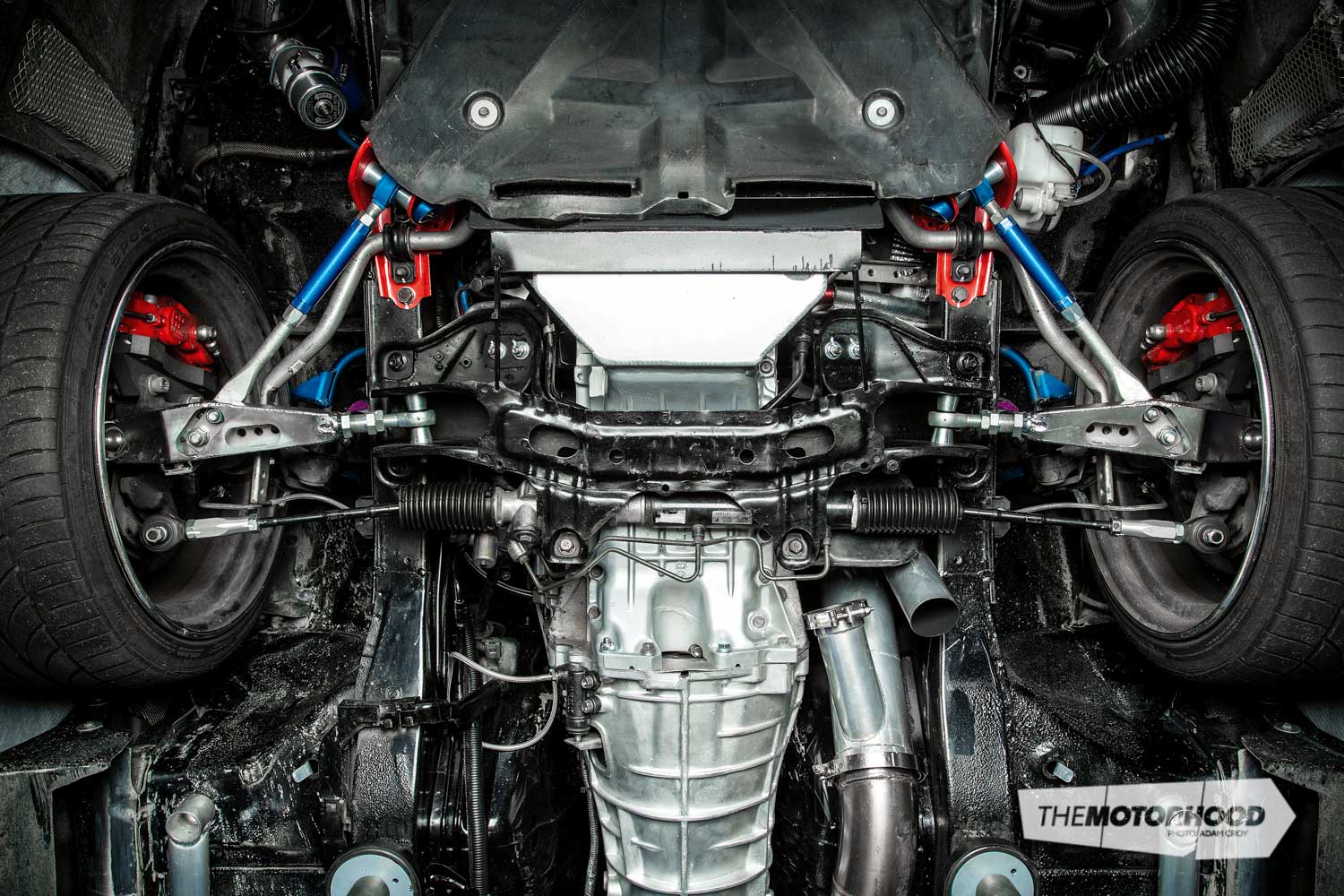
Over the next 12 months, he would assemble everything for a near–boost-proof combination. Best of all, this meant Soichi could pick up the parts he needed while back in Japan, saving Frank a little in the process. His suitcases must have been bulging at times, as he brought back parts like the brand-new RB26 N1 block and full Tomei 2.8 stroker kit, which included 2mm-oversized 88mm pistons, rods, and a forged crank. And then there was the RB26 head and all its associated components — like the Tomei oversized valves; valve seats, springs, and retainers; and a pair of big-lift Tomei Pro cams — to fit in.
With all the parts back in New Zealand, Soichi pieced it together using a Tomei 1.5mm head gasket and Nismo studs, but not before the head received a healthy port and polish. The combination is able to take up to 40psi of boost, just the ticket when you have 1000kW aspirations.
Frank used that 12-month period to shop around to get all the necessary add-ons he would need. This included sourcing a manual gearbox that could take the punishment of 745kW-plus: “PPG was the only one which warrantied up to 745kW — if anything goes wrong it’s on their head. They don’t recommend their dog boxes for street use, as you have to be brutal. But so far it’s taken the punishment.” The four-speed long-ratio gear was shipped over, and The Gearbox Factory installed the internals into the RB25 casing.

During that same period, the shell was sent off to Grant at GT Refinishers, accompanied by a pile of fibreglass components, and a set of brand-new 19×11-inch and 19×12-inch Work Meister S1Rs was wrapped in seriously wide Pirelli P1 rubber. Grant hand-built a pair of 150mm steel fenders for the rear, and fitted all the fibreglass components before a fresh coat of gloss black with a red pearl was laid on.
To give you a bit more of an indication of just how wide the R33 now is, those rear tyres are 325s and the guards swallow them with little effort. There was some method in this madness, as they’d given some forethought to the issue of sticking some serious rubber under the rears come race time. And, to be fair, Frank will need all the help he can get with traction, as the 10psi run-in tune put down 530kW, using only a quarter of the boost the block is built to handle. It was in this tune that the first 2000km were clocked up to run in all the fresh components before Soichi strapped it back onto the dyno — but not before switching turbos, as the first turbo used, a Garrett GT42, was found to be far too laggy, as it only hit boost at about 6000rpm. Thankfully, Garrett had just released its new-and-improved GTX series, so a GTX4202R was bolted on and the result was instant. Boost was now coming in a 1000rpm earlier than before, and with a little more dialled-in (28psi, to be exact), Soichi brought the power figure up to the current 717kW. While Frank refers to this as the “mild tune”, there is no denying this is some serious power on pump fuel, and a lot of beef to have under your right foot. But Frank isn’t stopping there — during the shoot, we spied a big drum of E85 sitting in the corner of his workshop, and, once the engine has done around 10,000km, the switch to ethanol will happen. With that and even more psi, some really big numbers are likely to flash up on ST Hi-tec’s dyno screen.

Anticipating a big tune, the R33 has all the necessary hardware in place, with the Aeromotive A1000 main pump, Tomei dual feed rail, -10 lines, and 1270cc Denso injectors all sitting waiting to be used to their full potential.
While Frank’s resigned to cruising around on the ‘mild tune’, the time is being used to perfect the rest of the package, with parts like the 745kW-capable alloy driveshaft and half-shafts imported from the US, and a full suspension package consisting of HKS, Nismo, Cusco, and Nagisa Auto components usually found in the likes of D1GP cars rather than a streeter here in New Zealand.

This brings us to the most important fact of all: this R33 is still 100 per cent a streeter, not a race car in street-car clothing. It has a WOF and rego and is fully certified. Frank admits it was a lengthy process to achieve the little metal badge of honour and its associated window stickers, but after receiving a pink sticker for the excessive power increase and wider-than-stated wheels, he was forced to go through the motions. This included getting a MotorSport New Zealand authority card for a few aspects and working closely with his certifier, who was reportedly quite taken aback by the level of modifications and the car’s power output. But in the end, the green light was given, and Frank can now cruise the streets, five-inch exhaust in play, banging gears through the PPG dog box.

So what of that sibling rivalry? Well, Frank is waiting for the full tune before lining up his younger brother’s GT-R, when 500kW all-wheel drive versus a possible 1000kW rear-wheel drive should make for a great match-up. But whatever happens, win or lose, we highly doubt the rivalry will be extinguished; instead, the result will push one of the brothers to the next level of modification, although, if it’s Frank, we aren’t exactly certain what this R33 has left to modify … We’re sure Frank will find something. Once the bug tune is thrown in, Frank has promised us a ride, and we’ll let you know just how that goes.
1996 Nissan Skyline GTS T Nismo
Engine
- Model: Nissan RB28DET
- Block: N1 block, Tomei stroker kit, Tomei 88mm pistons (2mm oversized), 1.5mm Tomei head gasket, eight-litre Racefab sump, Tomei baffle kit, Tomei oil pickup, custom skid plate
- Head: RB26 head, 290 Tomei Pro Cams with 11.5mm lift, ported head, oversized valves, Nismo studs, Tomei cam gear, Tomei valve seats, Tomei valve springs, Tomei retainers
- Intake: Hypertune plenum with oversized runners, Q45 90mm throttle body, Blitz air filter, HKS intercooler, GReddy intercooler piping
- Exhaust: ST Hi-tec custom five-inch titanium exhaust system, A’PEXi manual flow-control valve, Sinco manifold
- Turbo: Garrett GTX4202R
- Wastegate: 60mm Turbosmart Powergate
- BOV: GReddy Type R
- Fuel: Nismo in-tank pump, Aeromotive A1000 main pump, Sinco surge tank, 1270cc Denso injectors, Tomei Type L fuel-pressure regulator, Tomei fuel rail, -10 braided feed line
- Ignition: Splitfire coils, Blitz spark plugs, aftermarket coil loom
- ECU: HKS F-Con Pro V3.3
- Cooling: Koyorad Type R copper-core radiator, GReddy oil cooler
- Extra: GReddy catch can
Drive
- Gearbox: RB25 casing, PPG gearset (four-speed, long-ratio)
- Clutch: OS Giken triple plate
- Flywheel: OS Giken
- Diff: Nismo GT LSD Pro adjustable 2-way 4.3 ratio, GReddy 2.0-litre diff face plate
- Extra: Custom-made chassis braces front to rear, Do-Luck ridge bars, HKS A-pillar brace, carbon strut brace, Nismo clutch master cylinder, Nismo pillow, braided clutch line, 745kW alloy driveshaft, 745kW axles
Support
- Struts: HKS Hiper-D coilovers, HKS springs
- Brakes: KSport hydraulic handbrake, line lock system; (F) AP Racing six-pot calipers, 370mm two-piece rotors, AP Racing pads, braided lines; (R) Nissan four-pot calipers, 345mm rotors, EBC Brakes racing pads, braided hoses
- Extra: Custom rear subframe, solid subframe bushes, Cusco Drag R castor arms front and rear, Cusco toe arms front and rear, Cusco camber arms front and rear, Nismo sway bars front and rear, Nismo Auto rear lower control arms, Nagisa Auto extended tie-rod ends, Nagisa Auto strengthened pillow-ball front lower control arms (85-degree steering lock), Nismo reinforced steering-gear mount bush
Shoes
- Wheels: (F) 19×11-inch Work Meister S1R (-0) (R) 19×12-inch Work Meister S1R (-15)
- Tyres: (F) 275/30R19 Pirelli P1, (R) 325/25R19 Pirelli P1
- Extra: Nismo long wheel studs
Exterior
- Paint: Black base 2K, three-stage red pearl by GT Refinishers
- Enhancements: Custom steel 150mm rear widebody, D-MAX carbon 50mm front guards, Bee-R carbon wing, Nismo 400R front bumper, Do-Luck rear bumper, Do-Luck side skirts, carbon roof spoiler, Ganador carbon mirrors, custom headlights, Nismo tail lights, LED lights throughout — all fitted by GT Refinishers
Interior
- Seats: (F) Jamex
- Steering wheel: Momo 330mm drift
- Instrumentation: HKS Camp 2 water temp, oil pressure, oil temperature, boost pressure turbo/intake, fuel pressure pump/injectors, exhaust temp, engine-power read, intake temp, Voltage, Nismo 320km dash
- ICE: Two 5000W Soundstream Tarantula subwoofers, 10,000W Fusion limited-edition amp, custom sub box, 15-Farad Soundstream capacitor, 0-gauge wiring by Rapid Radio
- Extra: HKS EVC 6, GReddy turbo timer, Jamex five-point harness, Nismo gear knob, HKS Direct Multi Recorder GPS camera system, Black Hawk GPS, half cage
Performance
- Power: 717kW (962hp) on 28psi at the fly on pump gas (mild tune); 650kW at the wheels
This article was originally published in a previous issue of NZ Performance Car. Pick up an edition below:






